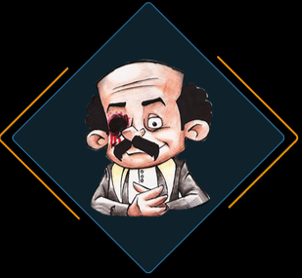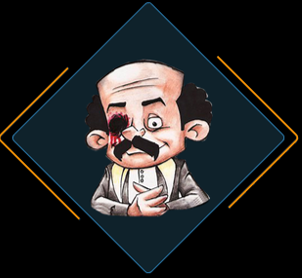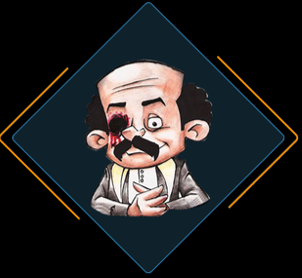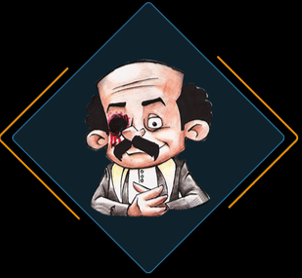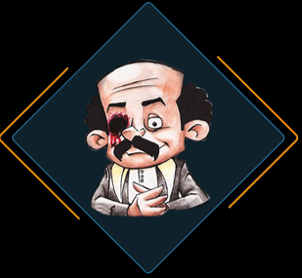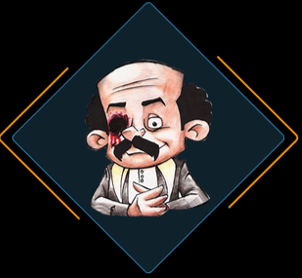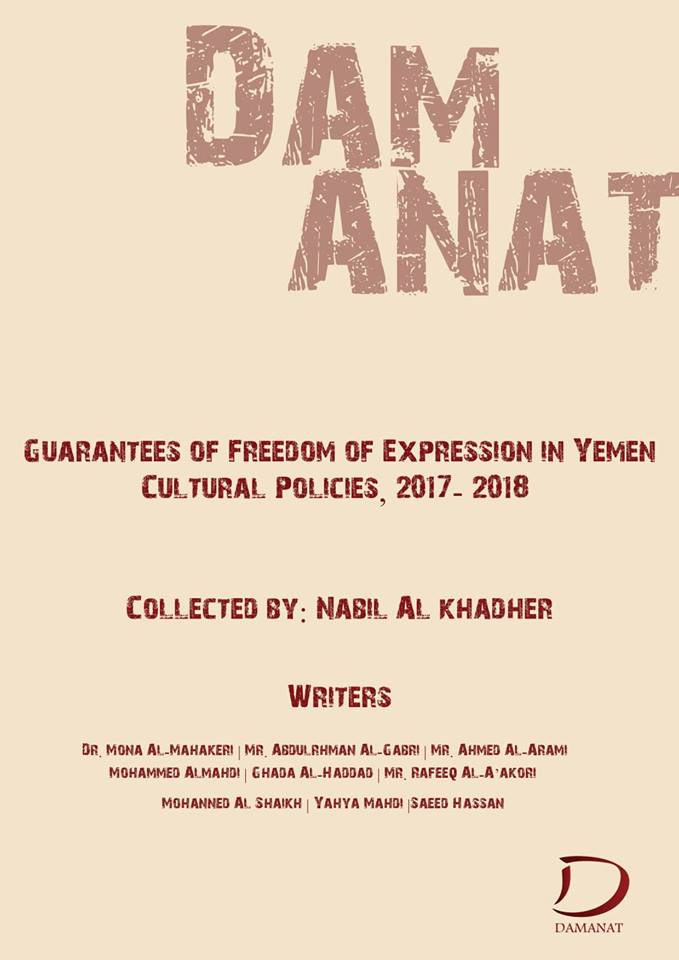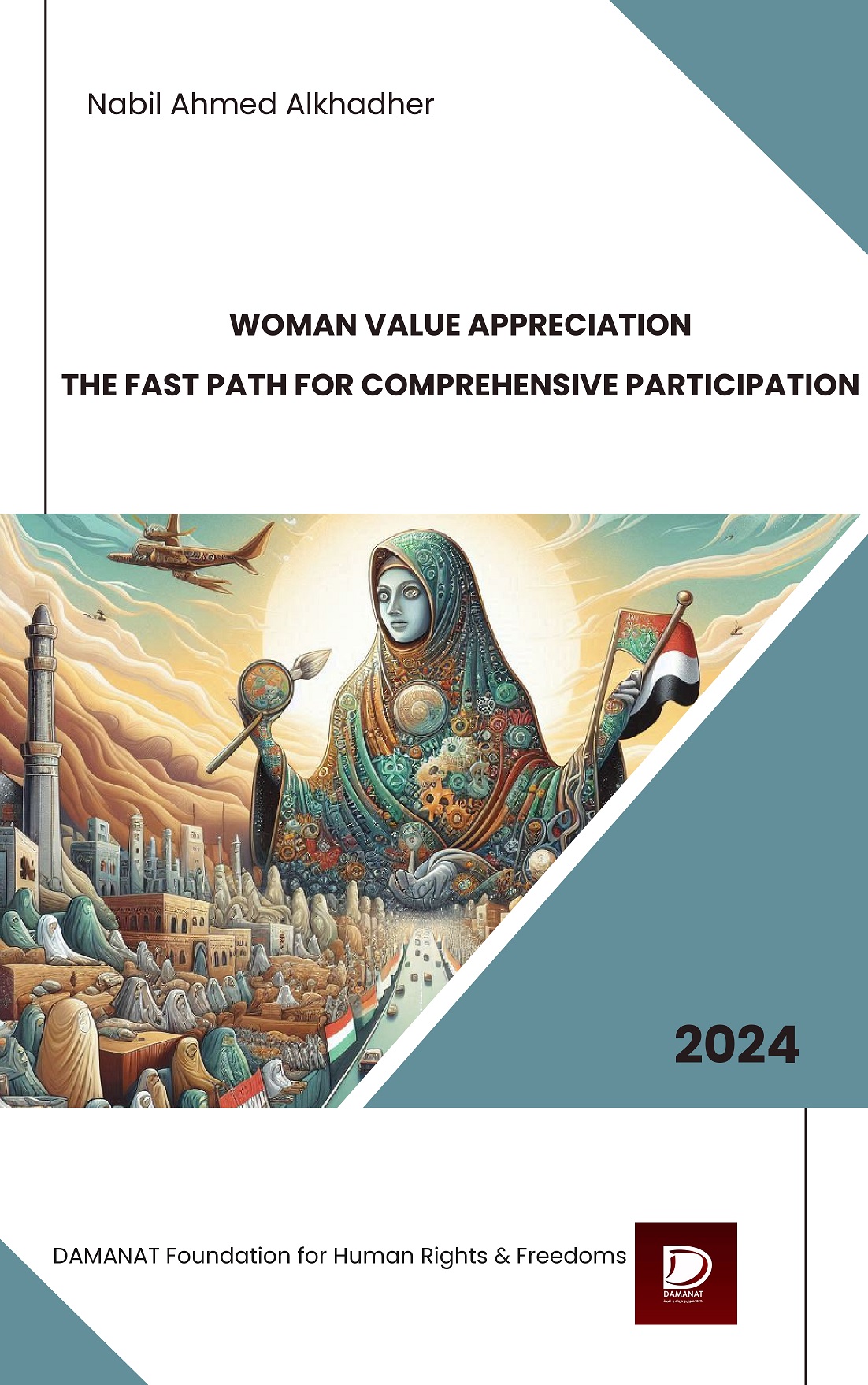Tue,Dec 16 ,2025
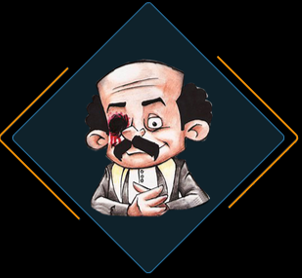
The State of Culture in Yemen
2025-04-23
The World Press Freedom Day is celebrated on the 3rd of May each year. However, press, arts, freedom of thought, expression and creativity in Yemen are in their worst circumstances due to the ongoing conflict. These have had a highly negative effect on freedom of expression despite Yemen had signed on international agreements that support and promote freedom of expression as they are important in development, creative productions, cultural and cognitive development.
Journalists, plastic artists, writers and media professionals have had bitter experiences including imprisonment, fleeing from Yemen and self-retroversion; thus leading to a slowdown in the development process and increasing bitterness of life on writers, knowledge producers and cultural actors in Yemen.
The creators cannot work in peace or war periods without policies and laws that support their attitudes, creativity, intellectual and creative freedom.
Accordingly, the idea came to write this book which tries through working papers to cover the experiences, ideas and suggestions made by non - governmental organizations(NGOs, youth initiatives, journalists, writers, plastic artists, photographers and companies working in the field of cognitive, cultural and artistic production that all support freedom of expression.
Yemen is a country that does not accept new trends in art due to the lack of cultural agents' knowledge and their non-desire to make use of the Internet, technology and grants and projects given to them. Most of the arts that emerged strongly in the ten previous years were variations of ancient arts with some focus on digital arts by virtue of the development of computer and the Internet such as digital design and documentary movies. These are new for the Yemeni society, and they are often done by civil society in Yemen as a part of grants provided to projects that discuss community issues, yet they are not allocated independently for cultural work except in rare cases.
With the rise of civil society organizations and in particular those related to issues and problems of society, cartoon has emerged as one of the new topics that became popular in Yemen. So, there were good productions such as "Salma" , a cartoon about girl education produced by Yemen Women 's Union, as well as ''Ahmed Return" produced by Shodhab Foundation for Childhood and Development. Similarly, there are some productions in this field carried out by young people such as graduation projects or some early experiments such as the experiment of "Morjan and Colors' Feather" by Ibhar Foundation for Childhood and Creativity as well as documentaries and recording films produced by civil society organizations in collaboration with the talented youth which discussed rights, development and environmental issues.
With the spread of political comedian programs which were quickly covered by local channels owned by political parties, it appeared '' Akis Khat' program presented and acted by Mohammed Al-Ruba as one of the most famous programs in addition to other attempts in this aspect which have their audience and supporters.
Although Puppet Theater has existed for a long time, it has recently been popular as well as Shadow Play. There are new Foundations and Initiatives that have introduced and established this art and supported it in their work.
Political and partisan pluralism after Yemeni unification has helped in the emergence of many newspapers, including cultural newspapers. However, due to the Revolution of 2011and Coup of 2014 have decreased freedom. Certainly, many newspapers, magazines, non-governmental organizations, local channels and radio stations have been closed.
The existence of new types of art in a traditional society like Yemen is a risk, but once these types were accepted by the society, it will be easier for their popularity. However, there are not many who like risk in the private sector and the government. Thus, civil society organizations (CSOs) become one of the important resources for change and development. This is due to the fact that most of these experiences are funded which makes the organization's level of material risk little. If it is successful, there is a guarantee of replication with other donors. If it fails, there are always other donors for new works and new ideas.
The political events also played a role in changing the arts and freedom of expression in Yemen, there has been, for example, an intensive emergence for national or religious anthems, which are very similar to famous religious songs which are shown in the religious channels in addition to the use of some machines in chanting as a kind of arts update commensurate with the development of the musical arts. Thus, new update and reproduction have been made to famous emotional, religious and patriotic songs which have been available for ages by transforming their melodies into patriotic songs that their poems were hastily created to serve the 2011 Revolution and also to serve some of the purposes of the 2014 Coup.
Events of 2014 have also contributed to a strong and new appearance of "Zamil". It is an old art form which was not paid much attention by the public except in some villages but it re-emerged strongly in September Coup of 2014 by Houthis. So, it has become famous strongly across the nation where many works of such type have become popular to serve Houthis' objectives, policies or news. Of course, there are many exciting Zawamil broadcast via radios every day.
Apart from politics, youth initiatives have created groups of works that they present in YouTube because the Yemeni channels are mostly reluctant to broadcast them only if are paid for their ads. Most of which are poor renewal of well-known and great Yemeni and Arab songs and not expensive in their production. They are related to certain events such as national and religious festivals and social events.
Despite the importance of artistic production corporations in supporting freedom of expression in Yemen through artistic, intellectual, and cultural production as well as the desire to produce to make a profit, the society's traditional view scares investors. As a result, most productions in the last ten years were programs funded by civil society organizations or inexpensive experiments by young people. Certainly, there are commercial recording studios that record and publish but mostly produced by the singer himself. Some of these studios are not enough independent but as a part of a certain commercial or political entity by which it communicates its culture in public. Some of medium – sized and big civil society organizations established their own studios as a project that ensures its continuity, but they are also oriented programs which do not support independent creativity or freedom of expression.
For TV channels, there have been a lot of television channels that have been established due to political attraction such as Al-Masirah TV owned by Houthis, Yemen Today owned by the former President Saleh and the People's Congress, Suhail and Yemen Youth channels owned by Islah party and channels of the private sector such as Al-Saidah. There are also programs that broadcast the arts within their program map, but each one of these channels hosts singers, intellectuals and artists who support them.
With regard to radio stations, we also see the same problem where each entity has its own radio station or stations which often broadcast works of art for its singers and artists as well as some independent artistic production for non - governmental organizations, youth initiatives or independent creators yet they do not always broadcast where priority is given for those who are similar to the radio and owners' policies or its supporters. Moreover, the National Radio Station, which recently became under the control of Al-Houthis, often adopts artistic or cultural perspective in production and broadcast of artistic and cultural works.
There were many local radio stations for each Yemeni province, each concerned with the local arts in its surroundings with some attention paid to Arab arts to meet broadcasting hours.
There were many local radio stations for each Yemeni governorate, each concerned with the local arts in its surroundings with some attention paid to Arab arts to meet broadcasting hours.
Some radio stations belong to some local and international CSOs such as the Talent Children Radio Station, which is supported by Save the Children, Yemen Times Radio as well as Access Radio, which is supported by international organizations.
The private sector has its own radio stations as well, like Tirmana Radio which broadcasts 24/7 Yemeni, Arab and Western songs as well as Sam FM Radio, IRAM Radio and Grand FM Radio.
For newspapers and magazines, there were a lot of them before the Revolution of 2011. They increased in number due to the political polarization yet after the revolution they decreased largely especially after the Coup in 2014, as well as the war and launching the Decisive Storm so dozens of newspapers and magazines have been suspended after having, in each newspaper, a page devoted for arts and culture as one of the traditional pages in any newspaper. They used to publish poems, short stories, written passages from plays and novels in addition to the news of the Yemeni and Arab singers, and the activities of civil society institutions with artistic and cultural nature. There was an attachment for culture and art in Yemen’s official newspaper "Al-Thawrah" this attachment is usually issued every Monday.
CSOs have contributed through magazines and newspapers in which two to three issues were published based on the availability of funds, but then disappeared until the organizations themselves disappeared due to the closure of a number of them after the coup in 2014.
There are organizations that have worked on publishing some films for young filmmakers and youth initiatives such as Sawt Cinema and Shooft Foundation for Cinema which presented a lot of local production being supported by Arab and international grants.
In the Internet there are websites for some writers, they created them themselves, like the website of writer Ms. Nadia Al-Kokbani, in addition to some of the cultural blogs created by the writers when blogs were popular as a new way of publishing and expression before the emergence of Facebook in which many writers began to post most of their work on their personal pages on Facebook as one of the important and popular publishing platforms.
There are cultural websites such as Fun Time, which is interested in publishing Yemeni artistic and cultural news, and the Basement Cultural website, as well as the Yemeni non-governmental organizations' websites, which publish some of their artistic, literary and cultural productions, if any, on their websites and in their social networking websites.
At the level of the cultural policies in Yemen, there have been developments in the field of cultural policies during the past ten years. Civil society organizations contributed to this by calling for the development of some cultural laws in the Ministry of Culture and ministries related to freedom of expression and cultural policies in general. The final document of the National Dialogue Conference presented a very wide range of cultural policies and articles that resulted from the Conference, including laws on cultural rights, human rights culture, articles on book, intellectual rights and cinema, culture and media development, cultural journalism as well as children and women culture.
The Yemeni constitution, which was developed after the National Dialogue Conference (NDC), the new part is devoting a Chapter on Human Rights. This was not the case in the past constitutions, there were only some articles on culture as a human right in the amended Yemeni constitution and freedom of expression as one of the most important human rights. However, this was suspended due to the coup which was made under the pretext of rejecting federalism, which was stipulated by the NDC and the Constitution. In addition to the departure of President Hadi to Saudi Arabia and the start of the Decisive Storm. So, the NDC document and the new Yemeni Constitution were not in force yet.
Historically, some organizations under the support of Cultural Resource Organization called and advocated for the existence of cultural policies in Yemen like Al-Sharq Foundation and Basement Cultural Foundation.
There are laws that increase the support for arts such as the policies by which Heritage Fund, Young People Support Fund and Building Skills Fund were established as foundations that have to support youth and community creativity in different fields such as culture, arts, literature, innovations but the mistake always occurs upon practice. In Yemen which sees high levels of corruption, there is only little support for arts. Therefore, most revenues of these funds and other funds or programs are used in corruption or in financing the advocates and those who are similar in their views to the cultural and artistic decision makers.
There are also policies developed by some non-governmental organizations (NGOs) like Supporting the First Publication, and supporting the School Theatre however, they are still on projects in paper not inactivated yet, especially due to the current conflict in Yemen, there is no support for arts except some arts that keep pace with the Huothis' authority and broadcast via the channels. In general, there are cultural structures to support culture, arts and literature like the Skills Development Fund, the Heritage Fund, the Youth Fund and programs that support arts in the Ministry of Culture, governmental and quasi-governmental organizations and non-governmental foundations, but as usual there is corruption in the practice.
There are international organizations (INGOs and the United Nations (UN) agencies that support the arts but not independently. The support of these agencies to arts is a way to communicate their ideas on the protection of the child, democracy, Anti-corruption, relief and human rights.
The private sector supports festivals that supports the promotion of its products like sponsoring the graduation ceremonies and some of the arts presented on the university’s graduation stage.
Abroad, there are better opportunities for cultural support, but there the problem is the scarcity of organizations work in this filed, there are only two organizations namely, The Arab Fund for Culture and the Arts and Cultural Resource Fund that really work. Yemen's share of these two organizations appears to be low. Many organizations support these funds while Yemen is the bottom of their list.
Unfortunately, specialized cultural agencies such as UNESCO did not have the same impact as the other UN agencies and funds in Yemen. Thus, culture, arts and literature received little support with rare appearance and at a risk for independent creators.
The same situation is in the practice of freedom of expression on the ground although freedom of creativity is legally protected as well as artistic expression, but at the level of practice, there are a lot of problems, these include:
- Cultural and artistic organizations are closed by Houthis.
- Artists are prevented to open plastic exhibitions.
- Training courses and artistic, cultural or literary workshops are not allowed.
- A large number of journalists were subjected to arbitrary arrest and enforced disappearance without trial
- Radio stations are suspended.
- TV channels are suspended.
- Confiscation of newspapers.
- The escape of some cultural leaders outside Yemen because of the situation.
- Religious declares (Fatawi) to kill some artists.
Thus, having protection laws is not much or important since when practiced these laws seem not important as a whole by the Yemeni public because of the fact that the coupers did not recognize the law just through their laws. Yemenis in general do not enforce laws in peace or war situations. Therefore, creativity and artistic expression are often protected by the size of the creator, the power, society or organization to which he or she belongs, but some cases have been monitored that can be added as a new form of creative protection and artistic support.
Public protection for creativity. A great follow - up campaign is made by citizens, human and cultural rights activists for social networking, as happened with the case of Ayman Othman.
Sympathy and appeal by activists for human rights and cultural rights to cases of arbitrary arrest and enforced disappearance for intellectuals and media professionals as well as periodic campaigns in this field on social media.
Humane asylum cases were offered to some cultural leaders.
The artist's relationship with a tribe or political entity that guarantees his protection.
The impact of the conflict in Yemen as well as the war on Yemen have played a negative role in the cultural, artistic, literary and heritage development, cultural heritage protection and many other cultural issues as they deteriorated by attraction, extinction, escape or poor funding by national, regional and international donors for culture, arts and literature and support for freedom of expression.
Freedom of expression is not only about support and fund, but also about the lines/channels through which creativity passes to consumers such as channels, radios, newspapers, publishing houses and cultural platforms, most of which have unfortunately been attracted and limited to independent creativity.
Freedom of expression is also associated with the consumer of the creative product, but the political screening also had an impact on the state of freedom of expression. As a result, there was artistic screening among the Yemeni public, too. In addition, there are a lot of people who listen to political Zawamil only, which are produced by the Houthis. There is also an audience who are interested in listening to Shilat produced by Al-Sharaiah artists who are affected by Saudi Arabia Shilats, the old national songs that re - produced or new artistic products with very few percentages of those who interact with youth initiatives and youth production of songs, films, documentaries. This is clear from the low level of watching to these products on YouTube. At the same time, there is a lack of response to many of artistic, literary and cultural activities among Yemeni audience as the people are searching for livelihood due to war, the siege, the increase of poverty, the outbreak of epidemic diseases, increased number of unemployment and non-payment of staff salaries for a long period which extended until now.
With the focus on consumer and cultural consumption, there is also a significant decline in this area. With the embargo on Yemen, it is totally banned to enter cultural products into Yemen, including respectable cultural magazines which have had interest among the public such as Al Arabi Magazine, Dubai Cultural Magazine, Doha Magazine, Nizwa, albums of Arab and foreign singers, and movies. The Yemeni public often watches these products online or through the purchase of pirated copies, which are present frequently in Film Selling Centers. Moreover, there is almost relative closure to the Yemeni theater, except for some plays that promote the vision of the current authority and this has its own audience.
On the level of cultural events, there is an elite tendency towards the presence of plastic exhibitions, morning and evening poetics, if any; where most of the audience are themselves for long periods.
There are no more cinema houses and therefore the cinema disappeared from the public although a number of organizations are active in this matter. However, the audience of these non-governmental organizations is few and they are the same audience for all plays then was suspended because the funds was suspended.
It is ironic that the size of aids to Yemen amounts to about 2 billion USD, of which not even one percent is allocated for cultural work, even if it is related to the relief work. It is ironic that world cultural centers departed from Yemen that could have provided artistic and cultural support for Yemenis at this stage such as German House, French Cultural Center and the Egyptian, Syrian and Russian Cultural Centers.
It is a defining and dark phase for the cultural and artistic work as well as the freedom of expression and creativity in Yemen. It was attended by all the neighboring Gulf countries, Sharaiah government or the coup government, or national, regional and international organizations. Yemen will need a lot of work after the end of crisis to reach an acceptable freedom of expression and a good creative product.
